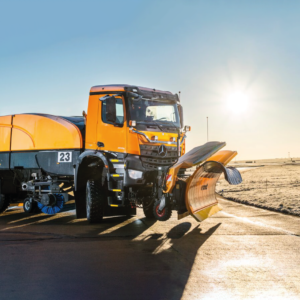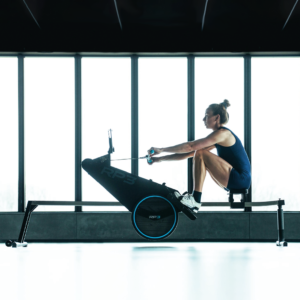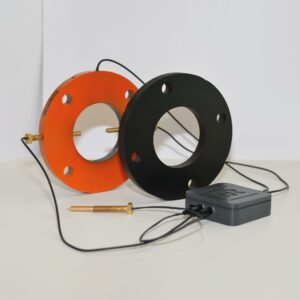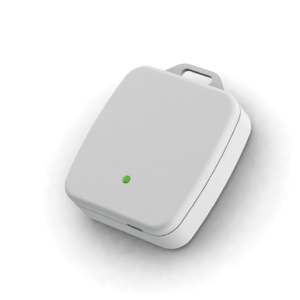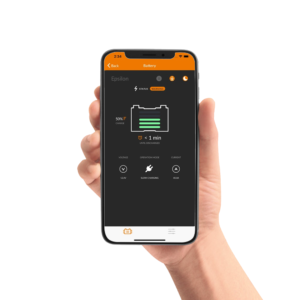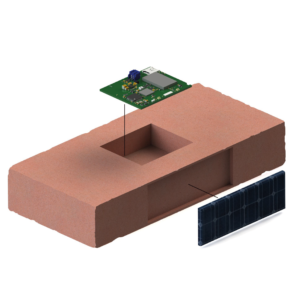Product realization guide: from idea to market
A good idea is only the beginning. The path from an idea to a succesful product requires a structured approach, timely decisions, and above all: alignment between market needs, technology, and the business model.
We guide you through the complete process of product realization: from sharpening your innovation strategy to the actual introduction of a scalable product to the market.
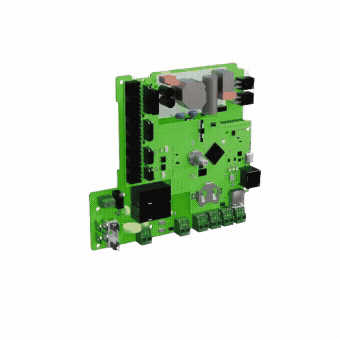
- We work with you
We don’t work for you, but with you. That you way you will stay involved and can keep control over your idea. - Personal contact
You will have direct contact with the specialists who work on realizing your idea. Spar directly with the right specialist. - Short lines
Would you like adjustments to your idea? Due to the short lines of communication we can act quickly to make it happen. - The IP is always yours
The Intellectual Property (IP) is always yours. However, we are happy to help you take care of the paperwork.
Table of contents:
Go directly to:
Chapter 1: Innovation strategy – The foundation for success
Chapter 2: Product strategy – The roadmap for product development
Chapter 3: Product research – Validating your product in the market
Chapter 4: From idea to product – Prototyping and testing
Chapter 5: Concept development – From idea to a concrete plan
Chapter 6: Product design – The blueprint for your product
Chapter 7: Product introduction – Successfully bringing a product to the market
Chapter 1: Innovation strategy
Build your strategy as the foundation for innovation
Technological innovations follow one another at a rapid pace, with the goal of continuously improving the world. For organizations that want to grow and remain relevant, it is essential to embrace innovation as a fixed component of their product strategy. But successful innovation doesn’t start with a brilliant idea—it starts with a well-thought-out innovation strategy that seamlessly aligns with your business strategy and long-term objectives.
A strong innovation strategy offers direction and provides stability. It enables you to not only follow trends and market developments, but to proactively leverage them. By innovating strategically, you translate external signals and customer insights into concrete solutions, products, or services that truly add value for your target audience.
Additionally, a clear innovation strategy ensures internal alignment. Teams know where the focus lies, which initiatives have priority, and how their work contributes to the larger organizational goals. This not only accelerates the innovation process but also increases the likelihood of successful product launches and sustainable growth.

What is an innovation strategy?
An innovation strategy is much more than a collection of separate ideas or creative brainstorming sessions. It is a well-thought-out plan focused on structurally stimulating, organizing, and implementing innovation within your organization. It helps you approach innovation not as a matter of chance, but as a strategic process that contributes to growth, agility, and competitive strength.
The core of a good innovation strategy lies in recognizing market opportunities, technological developments, and changing customer needs. From this, clear innovation objectives emerge that align with your business ambitions. Subsequently, you define which resources, people, and processes are necessary to realize these goals—from budget and expertise to partnerships and tools.
Building an innovation culture is also important. Employees must feel free to experiment, make mistakes, and contribute new ideas. A successful innovation strategy therefore creates a work environment where creativity, collaboration, and continuous improvement are encouraged.
The importance of technological innovation
Technological innovation revolves around renewing or improving products, services, or business processes by applying technological solutions and utilizing technical knowledge. This involves not only developing completely new technologies but also cleverly applying existing techniques in an innovative way.
The purpose of technological innovation is multifaceted: it can help solve bottlenecks, create new market or customer opportunities, increase efficiency, and enhance the user experience. Consider, for example, automating repetitive tasks, using data analysis for better decision-making, or developing smart products that respond to changing customer needs.
For organizations, technological innovation is a powerful engine for growth. It enables you to respond more quickly to market changes, develop new revenue models, and differentiate yourself from the competition. Moreover, in a rapidly digitalizing world, it is essential not only to keep up with technology but to actively use it as a strategic advantage.
In short: technological innovation is not an option, but a necessity for organizations that want to remain relevant and future-proof.
Elements of an innovation strategy
Flexibility
It is essential to fully leverage opportunities and to respond swiftly to changes in the market.
Customer-centricity
Understand the needs and desires of your customers. Only then can you develop customer-oriented solutions that deliver real value.
A clear, inspiring vision
This is where you define the most important innovation themes, explore new ideas, and have the courage to take risks.
A culture of experimentation and learning
Making mistakes is permissible. Learn from both successes and failures.
“Together we make your idea reality.”
Do you have a product idea that you want to bring to life? Our experts are ready to develop your product and bring it to the shelves. An initial consultation is always free of any obligation. Get started today!
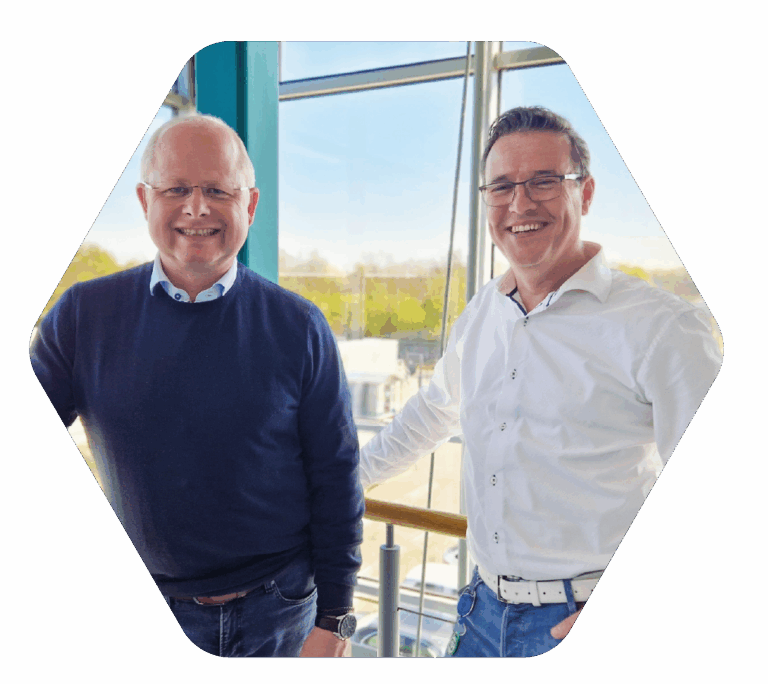
Tools & techniques we apply
SWOT analysis
SWOT stands for “strengths, weaknesses, opportunities, and threats.” With a SWOT analysis, we map out the opportunities for your business and show which aspects require special attention. The SWOT analysis provides direction for your product and innovation strategy.
Ansoff growth strategy
The Ansoff growth strategy is used to improve your organization’s performance. It involves examining both market impact and position. Subsequently, a growth strategy is chosen by determining whether to focus on developing new products or entering new markets.
Business model canvas
A Business Model Canvas (BMC) provides an overview of all essential components of your organization, such as your value proposition, customer segments, partners, and key activities. A BMC allows you to see how these components are interconnected, enabling you to respond more quickly and effectively to changes in the market.
Doblin’s 10 types of innovation model
This model helps your organization identify new opportunities by examining how organizations can deliver added value through innovation. Among other things, it looks at how your organization can choose a suitable growth strategy, stay ahead of the competition, or secure a strong market position.

Chapter 2: Product strategy
Develop your strategy as the core of your product
A product strategy forms the foundation of your product development: it determines the direction, the focus, and the choices you make. What do you include in your offering—and just as importantly—what do you deliberately leave out? By making clear choices, you create a focused and distinctive product that aligns with the needs of your target audience and fits your business goals.
You might already have a product strategy in place. However, it is crucial to regularly evaluate if it is still current. The market is constantly changing, as are the desires, expectations, and behaviors of your customers. What worked years ago may no longer be relevant or distinctive enough today.
Therefore, it is wise to view your product strategy not as something static, but as a dynamic framework that moves with developments in your industry and with your customers. Revising your strategy offers the opportunity to refocus: are you still aligned with your target audience? Are you using your resources optimally? And are you sufficiently leveraging innovation opportunities?
What is a product strategy?
A product strategy is a well-thought-out plan that provides direction for the development and positioning of your product. It describes what you want to bring to market, who your target audience is, and how you will make the product successful. As such, it not only forms the basis for your product decisions but also serves as the bridge between your overarching business objectives and the concrete execution of product development.
The importance of a product strategy
A good product strategy helps you stay focused in a dynamic market. It clarifies what your product should—and just as importantly, should not—address. Consider aspects like customer needs, technological developments, price positioning, distinctive capabilities, and growth opportunities.
Additionally, it offers the following key advantages:
Focus and direction: A product strategy provides focus and direction for everyone involved in product development and marketing. This accelerates the development process and helps keep costs low.
Competitive advantage: By creating a clearly defined offering that targets the needs of specific audiences, a product strategy helps your organization differentiate itself from the competition.
Targeted decision-making: A product strategy improves tactical decision-making. When there is a clear objective, plans or timelines can be easily adjusted.
Increased ROI: A product strategy leads to an increased return on investment (ROI) by developing products that provide value to customers and are profitable for the company.
Furthermore, a clear strategy provides stability for your internal teams. It ensures alignment between departments such as marketing, sales, design, and development. Everyone works from the same vision and goals, which significantly increases the likelihood of a strong final result.
Core components of a product strategy
Value proposition
The value proposition describes the unique benefits your product offers to customers. It explains why they should purchase your product over competing ones.
Sufficient time and budget
Your new product doesn’t just appear on the market overnight; it requires a significant investment of time and money. It is therefore important to have a clear understanding of how much needs to be invested in new products.
The right expertise
The right expertise is essential for developing new products and ensuring their success. If you don’t have the necessary expertise in-house, you will need to hire new people, retrain your current staff, or engage an external party.
A clear innovation strategy
Innovation is a topic that must be central to your product strategy. However, this isn’t possible without a solid innovation strategy, which helps you anticipate future market developments.
Examples of companies with a strong product strategy
There are numerous examples of companies that have achieved success through the implementation of an effective product strategy.
A few notable examples include:
Apple: Apple’s product strategy is based on creating premium products with a seamless user experience across their various devices, targeting a specific market segment.
Dyson: Dyson’s product strategy is focused on developing different products that share the same core technology. For instance, all of their products, from vacuums to hair styling tools, utilize cleverly applied airflow techniques.
HUE: HUE’s product strategy is centered on creating connectivity between their various lamps and technologies. Their ecosystem forms the basis of this strategy.
Tools & techniques we apply
SWOT analysis
SWOT stands for “strengths, weaknesses, opportunities, and threats.” With a SWOT analysis, we map out the opportunities for your business and show which aspects require special attention. The SWOT analysis provides direction for your product and innovation strategy.
Design thinking
Design thinking is an iterative process used to solve complex problems. Central to this methodology is defining problems from a human-centered perspective. It revolves around developing solutions that are focused on the problems and needs of your target audience.
Design techniques
At Beeliners, we utilize various design techniques to optimize your product strategy. This includes techniques such as one-on-one user interviews, competitive analysis, creating mood boards, mind mapping, rapid prototyping, design sketching, and holding various brainstorming sessions.
Business model canvas
A Business Model Canvas (BMC) provides an overview of all essential components of your organization, such as your value proposition, customer segments, partners, and key activities. A BMC allows you to see how these components are interconnected, enabling you to respond more quickly and effectively to changes in the market.
Product development plan
With the product development plan, we describe the necessary steps to design, develop, and ultimately launch the product. This plan provides direction for the process we will undertake together. In this process, we begin with the strategy, then investigate the feasibility of your idea, and create various prototypes.

Chapter 3: Product research
Conducting product research for validation
You have an idea for a new product—or perhaps you want to innovate an existing one. But somewhere, a doubt lingers: will people truly appreciate this? Will they see the added value? And will they use it in the way you envision?
Those are valid questions. Because a good idea is only truly valuable if it aligns with the needs, desires, and behavior of your target audience. To find that out, product research is indispensable.
With product research, you gather valuable insights long before making major investments in development or launch. You investigate what customers really need, how they think, what frustrates them, and what their expectations are. This can be done, for example, through interviews, surveys, observations, or by testing prototypes.
This way, you not only discover if your idea has potential, but also how you can improve, refine, or even reposition the product. You reduce the risk of a market mismatch and increase your chances of a successful introduction.
What is product research?
Product research helps us to collaboratively evaluate if your new product truly aligns with the insights and goals that previously emerged from market research. While market research provides a view of broader market needs and trends, product research zooms in on the specific product idea: does it genuinely fulfill a need for your (potential) customers?
We investigate if your product is not only relevant, but also practical, attractive, and user-friendly enough to motivate people to act. In doing so, we also look at additional expectations and requirements that customers have—such as price, sustainability, ease of use, or design.
Based on this valuable feedback, we can improve the product in a targeted way. Perhaps minor adjustments are needed in functionality or positioning. Or perhaps an unexpected opportunity may lie with a different target audience or application.
By using product research as a link between market research and product development, you ensure that you don’t just have a good idea—but a product that truly fits what your target audience is looking for. This increases the chance of success at launch and in the long term.
The importance of product research
With product research, we collaboratively evaluate if your new product seamlessly aligns with the insights and objectives that previously emerged from market research. While market research provides a view of broader market and customer needs, product research zooms in on the practical applicability and appeal of your specific product.
We investigate whether the product genuinely responds to the needs of (potential) customers, while also critically examining the additional requirements they have—such as ease of use, price, sustainability, design, or service expectations. This way, we map out whether your idea is not only relevant but also viable and appealing to the target audience.
The insights from this research provide concrete tools to improve your product. Perhaps functions need to be adjusted, a different material needs to be chosen, or there are gains to be made in communication or packaging. Whatever the outcome, we ensure that your product is even better aligned with the target audience, giving it a stronger market position and a greater chance of success.
Advantages of product research
Discovering potential problems with your product.
Avoiding unfounded product development decisions.
Gaining deep insights into the mindset of your target audience.
Determining whether your new product can compete with similar products.
Core components of product research
Innovation Strategy
An innovation strategy is a plan focused on stimulating and implementing innovations within your organization. In it, you define which areas of innovation you will focus on in the future and how you will achieve this. An innovation strategy enables you to innovate continuously.
Product Strategy
The product strategy serves as a guide for all aspects of product development. It’s a plan that describes how your organization will position a product in the market.
User Research
The goal of user research is to gain insight into the needs, desires, and expectations of the intended target audience. Based on this, we can better respond to their needs and ensure the product meets their expectations.
Problem Statement
The problem statement, or the definition of the need, is a key component of product research. In the problem statement, you formulate the specific problem or need you intend to solve with your product.
Program of Requirements (PoR)
Subsequently, we can establish a Program of Requirements. In this document, we aim to clarify as much as possible what the most important core requirements are from a future user’s perspective. This forms the basis for the technical specifications your product must meet. The PoR is flexible and can be adjusted if necessary.
Price Indication
At an early stage, you want to know where your product fits within the industry and what price customers are willing to pay. In many cases, the price indication is a component of the Program of Requirements.
Production Volume
A final important component of product research is gaining clarity on the production volume. Do you intend to make only 10 products, or is the goal to manufacture 1,000?
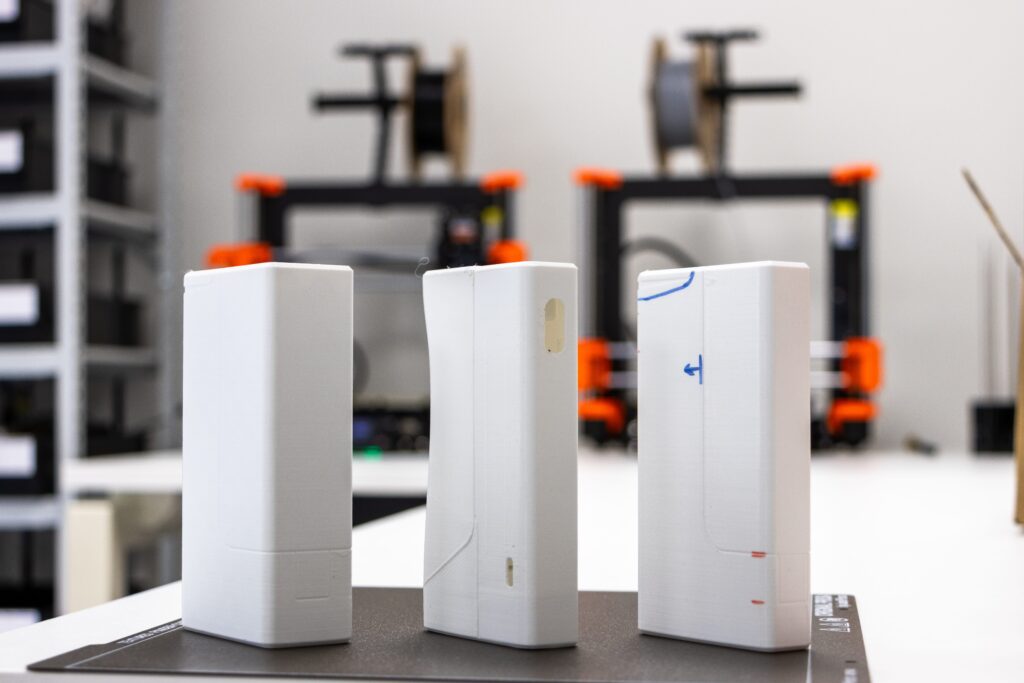
Tools & techniques we apply
Pilot testing
A pilot test is designed to test your product on a small scale using pre-production models. This allows us to verify if the product is used as intended, if the target users understand it, and if there are any remaining errors or areas for improvement.
Product research surveys
With these surveys, we investigate what the target audience thinks of your product, whether they would purchase it, and what exactly they want. Based on this feedback, we can improve your product to ensure it aligns with the needs of your target audience.
Product evaluation
A product evaluation is intended to determine if your product meets the established requirements and goals. Does it deliver on its promise? And what can be improved? That is what we aim to discover with a product evaluation. We do this by collecting customer feedback, analyzing performance data, and conducting usability tests.
Product-market combination (PMC)
This refers to the connection between a product or service and a specific market. With this, we define the scope of your product for the right target audience. We do this by asking several questions, such as: “Who is your product intended for?”, “How large is the potential market?”, and “How can your product provide a solution for your customer?”.
Customer interviews
During a customer interview, you engage in direct conversation with your customers. This provides immediate insights into the needs and requirements they have for the new product. Additionally, customer interviews offer insight into customers’ opinions of your new product.

Chapter 4: From idea to product
From your idea to a product on the market
The development process from idea to product proceeds through several carefully structured steps long before the final product actually appears on the market. Two of the most important pillars in this process are establishing a Program of Requirements (PoR) and exploring a wide range of ideas and solutions.
The PoR forms the foundation for the entire development trajectory. In this document, all functional, technical, and user-oriented requirements of the product are recorded. This way, we ensure that everyone has a clear understanding from the beginning of what the product must do and what it must comply with. Subsequently, we focus on creative concept development, where we deliberately generate many different ideas to discover the most promising solution pathways.
At Beeliners, we believe that the best products arise from collaboration. Therefore, we ensure that our partners are actively involved in every phase of the process. We do this through methods such as joint brainstorming sessions, where your input, vision, and market knowledge are indispensable. In this way, we combine our product expertise with your practical experience, and together we build a solution that truly works—from idea to realization.

What is the process from idea to product?
The process from idea to product begins with generating a wide range of ideas. In this phase, it’s about quantity over quality: the more ideas, the greater the chance of finding a valuable concept among them. These ideas can originate from various sources, such as market research, signals from customer conversations, market trends, technological developments, or targeted brainstorming sessions.
Brainstorming plays a central role in this. The goal is to create an open and creative setting where all input is welcome—because at this stage, there is no such thing as a right or wrong idea. In fact, surprising or unconventional suggestions can form the starting point for groundbreaking solutions.
Once a broad palette of ideas is on the table, the evaluation phase follows. Here, we critically look at the feasibility, technical viability, market potential, and profitability of each idea. Only the most promising concepts are further developed into concrete product proposals.
Thus, from a broad and creative start, a well-thought-out and promising path toward a successful product emerges. At Beeliners, we guide this process step-by-step, combining your insights with our product knowledge—for ideas that work and deliver value.
The importance of moving from idea to product
The process from idea to product is an indispensable step for anyone who wants to develop a successful and valuable product. It helps you to work on something in a targeted, efficient, and low-risk way, ensuring it truly aligns with the needs of your intended users.
By thinking broadly in the early stages and gathering many different ideas, you avoid immediately zooming in on a single solution that might not work at all. Instead, you build a solid foundation, systematically evaluating ideas based on feasibility, added value, and market potential.
This way, you prevent costly mistakes and develop not just ‘something,’ but a product that is relevant, meets real user needs, and actually makes an impact. The result? A greater chance of success at launch and satisfied customers who return.
“Together we make your idea reality.”
Do you have a product idea that you want to bring to life? Our experts are ready to develop your product and bring it to the shelves. An initial consultation is always free of any obligation. Get started today!

The process from idea to product
Getting from an idea to a product involves an entire process. Typically, this product development process consists of the following steps, which we will complete together:
1. Evaluating ideas: Once a number of ideas have been generated, they must be evaluated to determine if they are feasible and profitable. Factors we take into consideration here include market demand, the competition, technical feasibility, and costs.
2. Establishing a Program of Requirements (PoR): Based on the needs and problems identified during the product research phase, we can establish a Program of Requirements. This is a collection of the requirements and desires that your new product must meet. The PoR provides guidelines for your project, and we use it to justify and test ideas, concepts, and choices.
You can conduct this brainstorm yourself, but Beeliners can also assist you with various brainstorming techniques. The added value of an external party like Beeliners is that we can function as a catalyst, facilitator, and source of inspiration in this process.
3. Generating ideas: Once the needs and requirements have been mapped out, we can then begin to generate ideas that can solve the identified problems and needs of the market. In this phase, ideas can be generated for a new product, a new service, or an improvement to an existing product. This typically occurs through a brainstorming session.
Core components for getting an idea to product
A Clear Understanding of Market Needs
It is essential to have a clear insight into the needs and desires of the target audience before you begin developing your product.
A Strong Team
The process requires a multidisciplinary team of talented individuals with diverse skills, such as industrial design engineers, electrical engineers, and software engineers.
Effective Project ManagementIt is important to manage the process effectively to ensure that it stays on schedule and within budget. This ensures you can truly move from idea to product.
Flexibility
It is important to be flexible and to adapt to changes in market needs and the competitive landscape.
Protecting your product idea
If you want to turn your idea into a concrete product, it is wise to also think about protecting it with intellectual property rights (IP rights). This prevents others from simply running off with your idea or copying it without a second thought. This includes protection against counterfeiting, as well as securing your competitive advantage.
It’s important to know: you cannot legally protect a standalone idea. Only when your idea is sufficiently developed—for example, in the form of a concrete design or prototype—does it become possible to secure it through means such as a patent, design right, or copyright. We therefore recommend choosing this moment carefully.
When you partner with Beeliners, you always remain the owner of the intellectual property. For us, that goes without saying. Additionally, we proactively think along with you on how to best legally secure your concept. We guide you in selecting the right type of protection, preparing the necessary documents, and correctly describing your concepts in the official applications.
This way, we work together to ensure that your idea is not only well-developed technically and commercially, but also legally sound.

Tools & techniques we apply
Mind mapping
Mind mapping is a brainstorming technique where we write down a central topic and then map out all sorts of related ideas around it.
Exploring the extremes
When exploring the extremes, you take a single aspect of your objective and then magnify it or make it more extreme. By exploring the outer limits of your product concept, you can arrive at unique new ideas and insights.
SWOT analysis
A SWOT analysis can also be used during a brainstorm to qualify ideas. For example, describe how a certain idea is better than others (Strengths), what its weak points are (Weaknesses), what else is possible based on the idea (Opportunities), and what its potential disadvantages could be (Threats).
The why analysis
The Why Analysis, also known as the Five Whys technique, challenges you to ask “why” five times for each idea. This makes it easier for any underlying problems to surface.

Chapter 5: Concept development
Developing a concept for your product
The world is changing faster than ever. For an organization to remain relevant and successful, continuous innovation is not a luxury but a necessity. Concept development is an essential part of this innovation process. It forms the bridge between creative ideas and tangible solutions that truly add value for your customers.
At Beeliners, we work together to turn your ideas into concrete concepts: preliminary designs or plans that serve as the foundation for the final product or service. A good concept makes your idea tangible and provides stability for further development. It provides direction, makes choices transparent, and shows what your solution could look like in practice.
The major advantage of concept development is that we can test at an early stage whether your idea is feasible and valuable. By developing, testing, and refining concepts, you reduce the risks in the later development trajectory and increase the chance of a successful final product.
In doing so, we use an extensive set of tools and methods. Consider interactive brainstorming sessions, sketches, wireframes, 3D models, physical prototypes, and feasibility studies. This way, we bring your idea to life long before production is involved.
In this manner, we work together step-by-step to build a concept that is not only well-thought-out but also ready to deliver value in practice.
What is concept development inproduct development?
During concept development, the following steps are taken:
1. Generating and evaluating ideas: We generate various ideas through brainstorming sessions. We then evaluate these based on feasibility, market potential, and their fit with your business objectives.
2. Concept development: The ideas that emerge from the evaluation round are further developed into detailed concepts, including a description of their functions, benefits, and the criteria of the target audience. In this phase, multiple concepts are created, which are then tested against the Program of Requirements. The most promising concept, or a merged concept, is then used to create a final concept. This final concept forms the basis for the very first prototype.
3. A-sample: A first, detailed prototype, also known as an A-sample, is made from the concept with the most potential. We use this to conduct initial user tests to evaluate its usability, effectiveness, and overall satisfaction.
4. B-sample: Subsequently, a design iteration is performed on the A-sample (if necessary) based on the test outcomes. In most cases, these are not major adjustments. We then test this B-sample again.
The importance of concept development
With the help of concept development, we can quickly and purposefully identify ideas with the greatest chance of success. It forms an essential step in the development process for the following reasons:
Advantages of concept development
Reduces risks: By thoroughly evaluating and testing concepts before they are launched, the chance of failure is reduced, and you save valuable resources.
Increases the chance of success: Concept development helps in identifying the most promising ideas with the greatest potential to appeal to your customers and be profitable.
Stimulates creativity: The concept development process provides the space to build upon your initial idea.
Improves customer satisfaction: By developing concepts that are focused on the needs and desires of your customers, you are able to create products and services that lead to higher customer satisfaction and loyalty.
At Beeliners, we use concept development as a powerful instrument to elevate your idea to the next level in a targeted and well-substantiated manner. This way, we work together to build innovations that are not only new but also truly make a difference.
The making of prototypes
A prototype is a tangible, visual, or functional model of your product idea. It forms a crucial step in the development process because it allows you to test whether the design works as intended—long before you make major investments in production or technology.
The purpose of a prototype is to test, evaluate, and refine your idea. It helps to validate design choices, investigate user experiences, and assess technical feasibility. This way, you avoid investing costly time and money in a product that ultimately underperforms or doesn’t adequately meet user needs.
Prototypes exist in many forms: from simple paper mock-ups or cardboard models to interactive digital demos and fully functional versions that closely resemble the final product. The choice of prototype depends on the phase you are in and the goal of the test: do you want to only visualize the idea, or also test usability and technology?
A good prototype is more than just a test model—it is also a powerful communication tool. It makes your idea concrete and understandable to others, such as investors, colleagues, developers, or potential customers. It invites feedback and collaboration and helps you create support for your product.
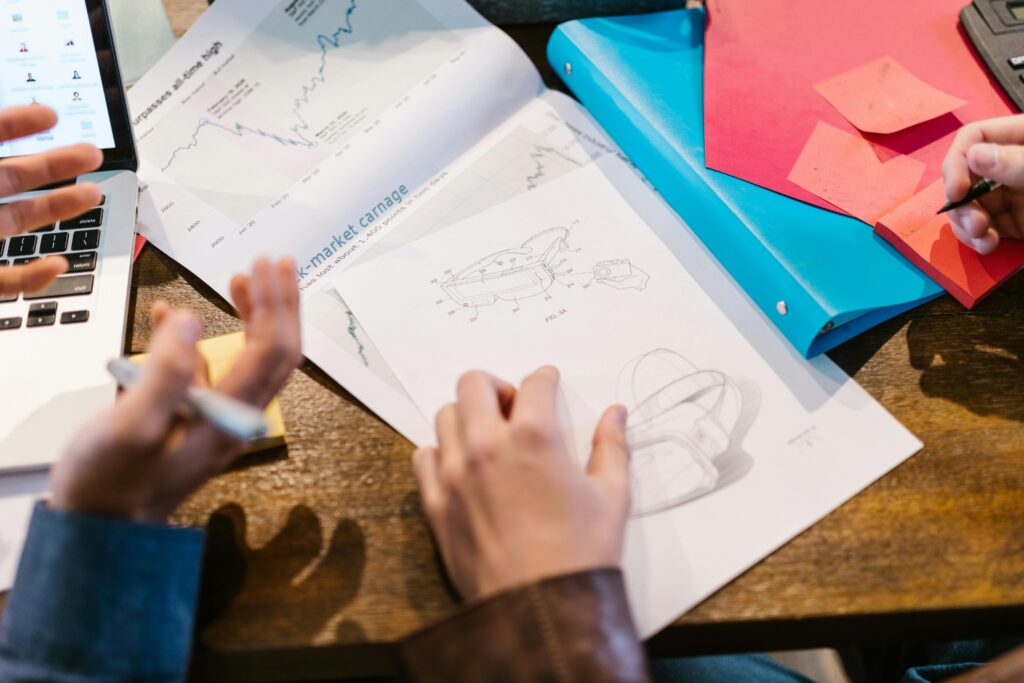
Different types of prototypes
There are different types of prototypes you can use, depending on your objectives and budget:
1. Low-fidelity prototypes: These are simple, fast, and inexpensive prototypes often made from paper, cardboard, or other simple materials. They are used to test the basic concepts of a product.
2. Mid-fidelity prototypes: These prototypes are more detailed and can contain interactive elements. They often involve the use of rapid prototyping and 3D printing. Mid-fidelity prototypes are used to test the functionality and user-friendliness of a product.
3. High-fidelity prototypes: These are highly detailed prototypes that closely resemble the final product. 3D printing and rapid prototyping are also heavily used for these prototypes. High-fidelity prototypes are used to test and finalize the design before it goes into production.
At Beeliners, we employ a multidisciplinary approach when making prototypes. Our experts work on your concept from various specializations. Consider, for example, the integration of circuit boards and software.
“Together we make your idea reality.”
Do you have a product idea that you want to bring to life? Our experts are ready to develop your product and bring it to the shelves. An initial consultation is always free of any obligation. Get started today!

Tools & techniques we apply
Proof of concept
With a proof of concept, we test the feasibility of your product concept. The intention is to use a proof of concept to define and realize the “showstoppers” of your idea, allowing you to test if your solution truly solves the problems of your target audience.
3D models
By creating 3D models, we visualize your concept. This is a good way to test the form and feel of your concept.
Prototyping
In the concept development phase, we create an initial prototype, or A-sample. With this, we test various aspects, such as what users think of the concept visually and whether it works as intended. Based on the outcomes, we can improve the prototype into a B-sample.

Chapter 6: Product design
Designing and creating your product
Product design is an essential step in the development process. This is the moment when your idea becomes tangible and truly takes shape. But product design goes beyond just appearance: it revolves around the right balance between aesthetics, functionality, ease of use, and value creation for your target audience.
A good design ensures that your product looks attractive, is intuitive to use, and meets the user’s needs. It is therefore a strategic phase where choices are made that directly impact the user experience, production costs, and the ultimate success in the market.
At Beeliners, we build upon everything we have previously established together in this phase: your product strategy, target audience insights, distinctive features (USPs), and the results from concept development. Thanks to our structured approach, we ensure that no important element is overlooked—from technical specifications to material choices and cost-efficiency.
We think not only creatively, but also practically and with the future in mind. In doing so, we continuously take scalability, sustainability, and manufacturability into account. This way, we work together to design a product that is not only beautiful and smart, but also realistic and profitable to produce.
Whether it’s a physical product or a digital solution, we ensure that your design is solid and ready for the next step: realization.
What is meant by product design?
Product design is the phase where your idea truly takes shape. In this step, we not only consider what the product should look like, but also how it functions, feels, is produced, and is experienced. Everything revolves around creating a solution that perfectly matches the desires of your target audience—both visually and functionally.
During product design, we examine important choices, such as the use of materials, technical feasibility, production techniques, and the associated costs. We determine who the product is intended for, what form and finish it will have, and how it can be produced in an efficient and sustainable manner.
A crucial part of this phase is UX design—or user experience design. This focuses on the user-friendliness of your product, whether that is a physical object, an app, or a digital interface. UX design goes beyond just appearance: it encompasses the entire interaction between a person and a product. Think of logical controls, clear instructions, the placement of buttons, and even the use of color, such as using red for an alarm function. All with one goal: intuitive use and minimal frustration.
At Beeliners, the user is always central. That’s why we actively test how the target audience interacts with the product. Does its use meet expectations? Do people immediately understand how it works? If not, we make adjustments. Because a good design is not only beautiful and technically well-conceived—it solves a real problem and creates value for the person using it.
Together, we ensure that your product design doesn’t just work on paper, but also in practice.

The importance of product design
Product design lays the foundation for the user experience, functionality, and appearance of your new product. A good product design does more than just make the product visually attractive—it ensures that it is intuitive and user-friendly, and that it perfectly meets the user’s desires. Moreover, a strong design differentiates your product from the competition by making it unique, relevant, and valuable in the market.
The steps we take in the product design process
1. Product design and development: Once a concept for your product has been developed, we can get started with the product design and development. This includes creating prototypes, testing these prototypes, and refining the design.
2. Product testing and feedback collection: We then thoroughly test the prototype to ensure that it is a safe and effective design. Your prototype can be tested by potential users for its usability, materials, quality, and their overall impression of the user experience. Additionally, tests are conducted to see if the product can be used safely and if it performs as expected.
3. Redesigning the product: Based on the test results, we will redesign and adjust the prototype. We then test the modified prototype again. We continue to repeat this process of adjustment and retesting. Typically, it takes 6 months to 2 years to make the transition to production.
Testing your product
Testing is an essential part of the product design process. It involves thoroughly evaluating the product to determine if it meets the established requirements and expectations. By carefully testing products, we can detect and correct errors early on, before they reach the customer. This results in higher-quality products, strengthens your company’s reputation, and significantly increases customer satisfaction.
Different product tests
There are various tests that are conducted, depending on the product and the objectives of the test:
1. Usability tests: These tests evaluate how users interact with the product. This can be done through observations and interviews.
2. Functional tests: These tests verify if the product meets the program of requirements and desires. This includes testing all functions and features of the product.
3. Performance tests: These tests evaluate the product’s performance, such as its speed, efficiency, and stability.
4. Safety tests: These tests examine whether the product is safe for use. This includes identifying and resolving potential hazards.
5. Compatibility tests: These tests evaluate if the product is compatible with other products or systems.
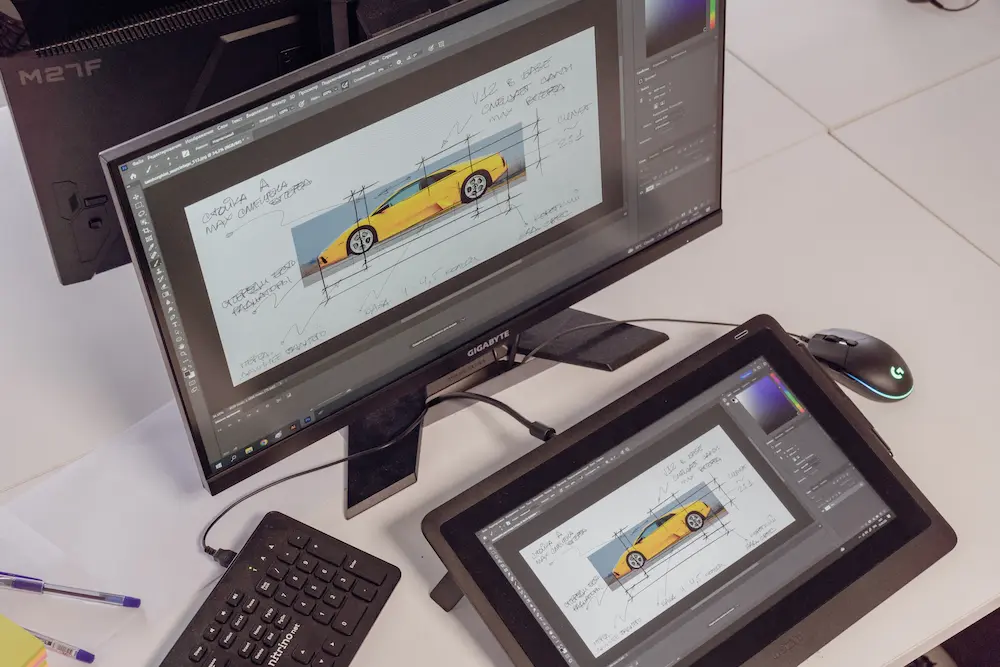
Tools & techniques we apply
Design sprints
A design sprint is a process based on the design thinking method. During this process, we try to find answers to your target audience’s problems through design, prototyping, and testing.
Agile work process
By constantly making small iterations to the product design and consulting with you, we can continuously adjust and adapt the design. Additionally, this approach allows us to monitor progress.
UX design
With your idea or product, you want to solve a problem and add value for your customers. Good UX design is an essential part of this. Ultimately, you naturally want customers to be able to use your product/service with ease.
Multidisciplinary approach
At Beeliners, we employ a multidisciplinary approach. This means that our various areas of expertise, such as hardware, industrial design, and application software, collaborate on a single project. This allows us to directly combine different insights and technologies.

Chapter 7: Product introduction
Introducing your new product to the market
You have transformed your idea into a final product you can be proud of. Now comes the most exciting, and perhaps the most enjoyable, part of the product development process: the product introduction.
The product introduction is the next step that follows the creation, testing, and validation of your product. It is the moment you are ready to actually bring your product to market and present it to your target audience. The success of the product introduction can mean the difference between achieving your goals and missing out on opportunities. That is why a well-thought-out product introduction plan is essential.
Together, we ensure that the launch goes smoothly and that your product receives the right attention. This plan consists not only of the marketing strategy but also of determining the right timing, identifying the key channels for promotion, and ensuring the correct market positioning. Furthermore, a successful product introduction also involves building anticipation among your target audience, so that they not only discover your product but also become enthusiastic about it.
Additionally, it is important to closely monitor the feedback from early adopters. This not only helps you to refine the product but also to align future marketing efforts. By combining a solid introduction strategy with flexible adjustments based on feedback, you increase the likelihood that your product will quickly prove itself in the market.
What is a product introduction?
A product introduction is the process by which your new product finally enters the market and can actually be sold. This is the moment when all the preparations made during product development are put into practice. But a successful product introduction goes beyond simply making your product available. It also revolves around creating awareness, generating interest, and building strong demand among your target audience.
To make this introduction successful, you must focus not only on the product itself but also on the right launch timing, choosing the right channels for distribution, and the marketing strategies you employ. It is important to tell a story that resonates with your target audience, showing them how your product solves their problems and why it is valuable. This can be done, for example, through teaser campaigns, exclusive pre-sales, or targeted social media activity.
The importance of a strategic product introduction
A product introduction is a crucial step for the success of your new product. It is not just a moment to make your product available to the market; it also helps to generate demand by positioning the product as the solution to a specific problem your target audience is struggling with. By effectively responding to the needs of your customers, you ensure that your product not only feels relevant but also necessary to them.
Additionally, the product introduction plays a key role in building a strong brand identity. It is the moment your brand clearly presents itself to the world and when customers first get acquainted with the values and promises your brand represents. Strengthening this identity contributes to consumer trust and makes your brand recognizable and memorable.
Another important advantage of a product introduction is the valuable feedback you receive from your customers. This not only offers insight into how well your product meets market needs but also helps you to further optimize the product. This feedback is invaluable for improving the user experience and for making potential adjustments before your product is rolled out more broadly.
Through an effective product introduction, you can successfully differentiate your product in a competitive market. This increases your market penetration, ensures you establish your brand on a solid foundation, and lays the groundwork for long-term success. A well-thought-out introduction offers the opportunity to quickly position your product in the market, build customer loyalty, and allow your product to grow in the future.

The development of your product with Beeliners
At Beeliners, we can support all facets of product development. This allows us to step in at any point in the product development process and provide a critical, fresh perspective.
Curious about the possibilities? Feel free to contact us for a no-obligation consultation.
4 awards for product innovation
17 products developed
in 2024
Supported more than 48 companies
Do you have a challenge for us?
Our product developers are ready to start on your innovative ideas! Do you have an idea, a question or a challenge about product development? Our team of specialists are ready to turn your ideas into reality. Don’t hesitate and feel free to contact us. We’d love to hear from you!
Our craftsmanship
Portfolio
Our insights, lessons and vision on productdevelopment
-
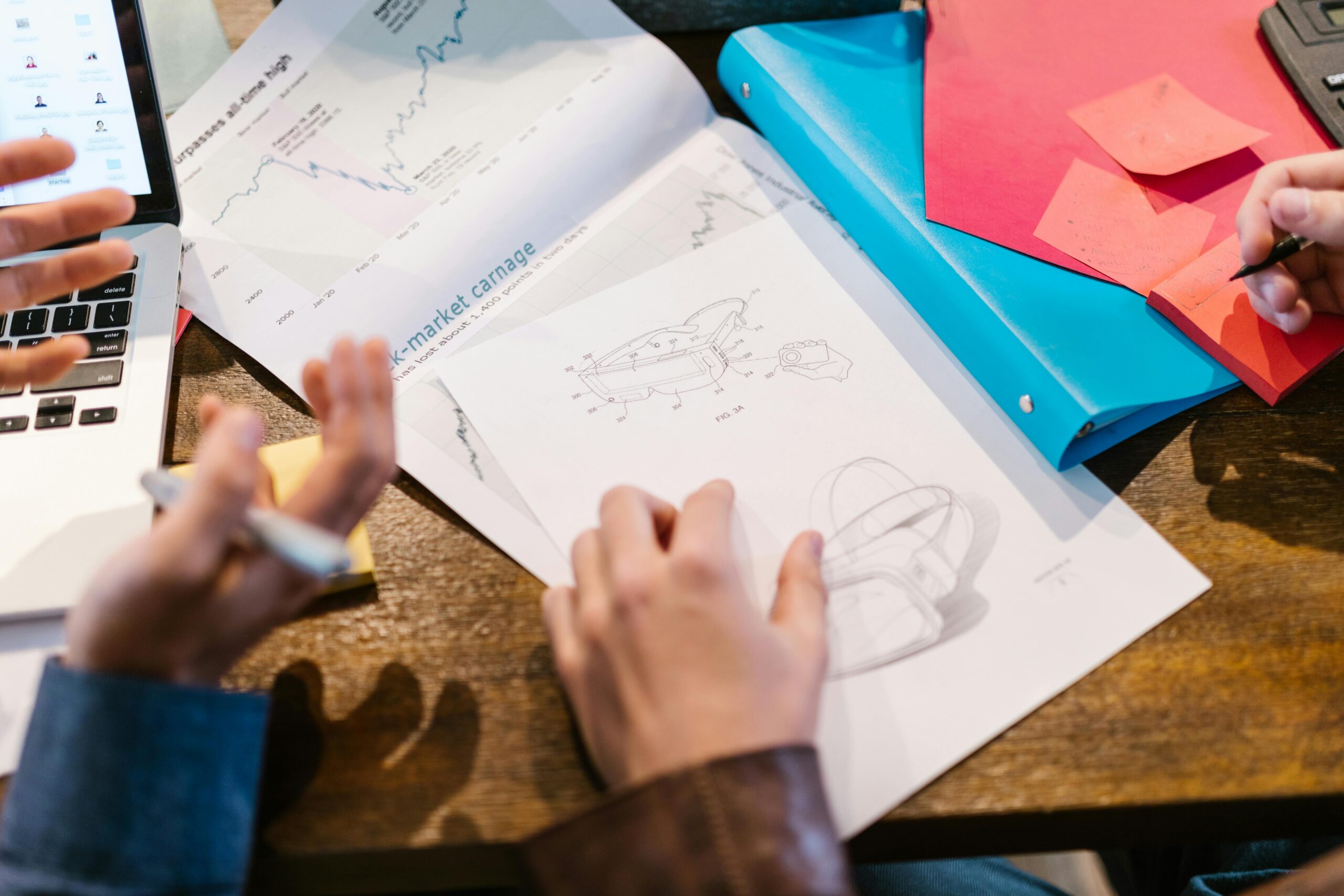
What is market research and how do you approach it?
When you’re preparing to launch a new product, it’s natural to be excited about your idea. But does the market share your enthusiasm? How do others view your idea? Or could it be that your new idea already exists? Market research helps you answer these questions. This type of research involves gathering information about your
-
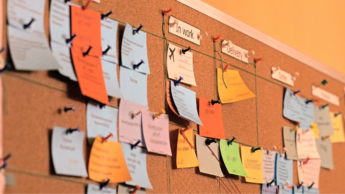
The iterative process: why and how we apply it
Every morning you wake up and the first thing you do is check your mobile phone. Throughout the day, you receive messages on it, and before you go to sleep at night, you set your alarm. We can no longer imagine modern phones not existing. In fact, the very first models wouldn’t have come about
-

I have a new product idea, what now?
After a long workday, you’re on your way home. During the journey, you have time to think, and suddenly something pops into your head: a brilliant idea for a new product! Ideally, you’d make it a reality that very evening. The process from idea to market introduction can be overwhelming. Fortunately, a good step-by-step plan





